I
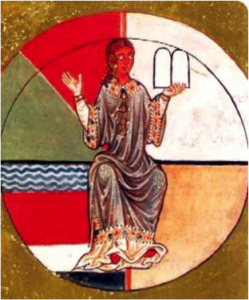 When Cynthia Bourgeault wrote The Corner of Fourth and Nondual, she was given the boundaries each My Theology series author was to adhere to: forty typewritten pages to be “a platform to reflect on the meaning of God in your life and the way you have constructed your life of faith” (quoted on the back cover of The Corner of Fourth and Nondual). Cynthia’s joy was evident as she described how these limitations inspired her. To be specific and succinct, with attention to each word and sentence in her narrative was clearly a welcome challenge. Beautifully executed, the request was right in her wheelhouse. Decades of her life as master weaver are packed into this little book, as she articulates the elements of the tapestry of her Christian ground and being.
When Cynthia Bourgeault wrote The Corner of Fourth and Nondual, she was given the boundaries each My Theology series author was to adhere to: forty typewritten pages to be “a platform to reflect on the meaning of God in your life and the way you have constructed your life of faith” (quoted on the back cover of The Corner of Fourth and Nondual). Cynthia’s joy was evident as she described how these limitations inspired her. To be specific and succinct, with attention to each word and sentence in her narrative was clearly a welcome challenge. Beautifully executed, the request was right in her wheelhouse. Decades of her life as master weaver are packed into this little book, as she articulates the elements of the tapestry of her Christian ground and being.
The book reveals a compelling path; the biographical road that led deeper into her daily practice, steadfast faith, and intuitive Christian knowing. Reading it, we see more directly how she put the building blocks of her foundation together to become the teacher that she is. This week in the Wisdom Waypoints book circles we consider her conclusion of this synthesis. Planted right in the center of the last chapter, we find a subtle—and remarkable—distillation of all she has written thus far. Cynthia says there:
Even at the highest levels of spiritual attainment, I believe that Christian nonduality will still hold fast to three core affirmations:
The redemptive reality of suffering.
The endurance of the personal.
The ‘scandal’ of particularity. (pg. 71)
“Well, I know why I am here.” I heard myself utter these words audibly, with undeniable certainty. I had been reading the chapter out loud, softly and very slowly to my resting husband. The words landed as a recognition event, a celebration. When all has fallen away, these three will remain. Here was the power and depth, the value—even necessity—of our human experience; essential to, intimately part of, the Whole.
Echoing what has been vibrating in me, I have been witnessing this, in others and in my own life. Like a birthday, the lifelong dance of relationship with our created world and the worlds beyond, humming alongside our daily pleasures, mishaps and pains—lives unfolding and spirits unfurling—all sung out loud, right here, at the very center of the story.
Yes, this is where I am dearly reminded of why I am here. Cynthia puts the embodied, experiential, realities of transformational suffering, the undying personal, and the immeasurably particular into a common basket and honors them together as core essentials of a nondual Christianity. Unspeakably beautiful and poignant, I am here because I know in my bones that this is true.
It is the witness and experience of these elements that is being brought forth now in my unfolding biography. It has been a wonder, for some time now, to see, more and more, that everything returns to these. I am listening for them within, noticing them in others, taking up them up and turning them over. I am not alone. They seem to be a pre-requisite portion in the alchemy of becoming human. I have a growing sense that it is indeed these that will allow me to be truly of service. They lie at the core of true love and agency, embodied and dearly lived.
So tender is the time it takes to cherish absolutely our lives on this good earth. To choose our path through our own unfolding biography and whatever Wisdom stream or tradition calls us. The cherishing may happen naturally over long arcs of time, others are taken down headlong, abruptly leaving worlds behind to return, undone, to the simplicity of right here and now. Some may sense a deep need to walk a path of becoming more human. I feel all these. None of it ensures ease. It always comes back to the exquisitely simple, and requires something just as primal of us.
Step by step we encounter old patterns running us, failures of heart and the requisite patience; our reluctance to take the brave step or the necessary rest. Do we remember to offer our humble compassion to the inner voices that hasten to chasten when we fall? Can we remain? Then willingly dive down to unearth the Awake and Aware—no matter what the circumstances—that is our birthright and true nature? Then meet our unformed selves acting out again? Can we recognize these as birthpangs, under the eye of those who watch over us, and celebrate becoming human?
As we open, we are given more to bear; as we step out, it is more and more frequently into the unknowing. We are called to the unexpected—invited to tend the simple and ordinary. Stripped down, I remember finding through a dark night that the path itself got narrow. Then more narrow. The consequences increase, the call is to let go further, over and again. It is a training delivered by a force greater than we have known.
This is all about suffering, all about the personal. Each path is unique. Particularity is steeped in the sacred through this lineage. If the way we are traveling is ours, something holds us steady when we least expect it, and something calls us back; as we learn to trust. If the way we are traveling is ours, we have the strength to embrace it.
As we grow we are educated in the physical sensations of truth and falsehood. We begin to taste it when we are speaking from patterns of separation, or thinking in the habit of identities. Emotions have a harsher, more acrid sensibility; deeper feelings move us into broader life currents and tend to fill us from the depths in the center, grounding and comforting. Even real sorrow is healing. It a beautiful thing—to begin to recognize sensations within, invoke a true response. Work with our rough edges with humility and gentleness.
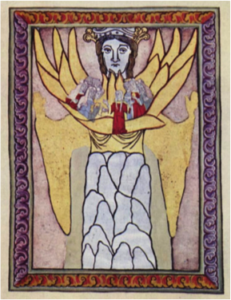 Suffering, the personal, and particularity are laced in and through all the conditions of life, and become essential core realities of a Christian nonduality in their alchemical passage. Day to day we often experience them in their undeveloped form. Disembodied, alone and static—each may be locked in a dualistic interpretation of itself by a culture and tradition gone astray.
Suffering, the personal, and particularity are laced in and through all the conditions of life, and become essential core realities of a Christian nonduality in their alchemical passage. Day to day we often experience them in their undeveloped form. Disembodied, alone and static—each may be locked in a dualistic interpretation of itself by a culture and tradition gone astray.
Cynthia offers us a key to their transformation. Active within us, each can be opened like a jewelry box, revealing exquisite treasure. “The redemptive reality of suffering. The endurance of the personal. The scandal of particularity.” As substance for a feast of lectio divina, may we tap into the power of these phrases to evoke—and begin to articulate—their deeper mystery! Here, in our daily lives.
III
Cynthia has found that in concert these three create a path of nonduality that ultimately opens us to “that mysterious convergence of ‘heart’, ‘visionary seeing’, and the direct infusion of a love of such clarity and generative force that it propels us back toward the world on wholly new and unpredictable paths of creative engagement” (pg. 78). We are talking here about a path that bring us full circle, into our centers and our life here in the world—the legs we stand upon completely new; and intimately ours.
At this new waypoint, suffering has become “less and less about substitutionary atonement and more and more about conscious love… and is a necessary precondition of any new arising. Suffering cannot be dissolved, but can be embraced and transformed, and for the Christian this is the alchemical pathway along which all unitive attainment will ultimately proceed” (pgs. 71-72). The redemptive reality of suffering is a “gate of heaven,” received and reciprocated in an offering of Love, turning within, and working us without.
I remember being refused Eucharist, kneeling with my hands cupped to receive, mouth open like a little bird. No blame, for person or tradition. It was severe, that refusal; a sorrowful loss, a hurt that required work. Turning towards the pain to go through the heart of it, a deeper compassion for our common humanity emerged. Bound (we tend to believe), by our laws and limitations, and run by an underground river of visceral, existential fear, I felt in myself how ‘bound’ and ‘fearful’ buds out in my life. That particular suffering became a waypoint along the path of my knowing. An unforgettable step; accepting my part in our human brokenness while confirming without doubt my/our ultimate belongingness. The rightful place of the mystery of Eucharist vibrates endlessly in the very fiber of our beings, and it cannot be refused.
Like suffering, the transformed personal now endures, and it, too, cannot be dissolved. Rather it becomes relational—then substantiates consciousness: “the highest manifestation of the divine nature unfolds within a relational (i.e. personal) field. In a Christian nonduality “the personal itself remains (…). An individual lives for himself alone; a person knows him or herself as belonging to a greater relational whole” (pgs. 72-73). The divine shining through our relationality. Participant now, in the Trinity as living mandala of Christian nonduality.
As I become a person my capacity to be present to the other, and to myriad polarities, grows. A deeper, relational, presence manifests; no less authentic as myself, and vibrantly part of all that is human. Deeply embedded in and necessary to the Whole. I am witness to this as a reality in life, awestruck by the genuine in people. It is both remarkable and uncomplicated that we come to this manifestation of Love and the Whole through the personal; entering fully into relationship and the ensuing manifest consciousness.
As to the becoming of the particular, Cynthia says: “Picture not just one single drop, but a vast ocean of drops, each one of them holographically containing the entire ocean…Picture this ocean…surging powerfully forward, destination unknown, propelled by its own mysterious inner current” (pg. 74). Merton’s experience at the corner of Fourth and Walnut is a revelation, she says, “both unboundaried in its vastness and yet excruciating particular.” One that illumines “the reality of oneness, but even more…the reality of suchness” (pgs. 65, 77).
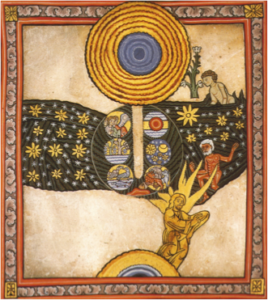 Can we hold fast to the gift of our redeemed sufferings and the true nature of the personal, and dive directly into the being-experience of ‘it is all held’; ‘everything belongs’; and ‘nothing is lost’? As a “suchness” in the oneness, can we take our part in the mysterious current? Without knowing where it is all going, or where we will end up?
Can we hold fast to the gift of our redeemed sufferings and the true nature of the personal, and dive directly into the being-experience of ‘it is all held’; ‘everything belongs’; and ‘nothing is lost’? As a “suchness” in the oneness, can we take our part in the mysterious current? Without knowing where it is all going, or where we will end up?
IV
After reading this chapter aloud, I drove through a landscape of soft new translucent greens and luminous reds. Currents of light shining through tiny new, ephemeral leaves budding out of winter wood. Through those leaves, glowing as if from within, light travels great distances to meet the eye. Utterly unlike the saturated lifeless deeps of winter-wood in its dark and quiet, which moves to a different pulse.
I suddenly knew paper birch, red maple, river willow, and winter-wood in myself. They were within me, and I was in each of them. The shine of color and light, not yet fully incarnate—that mix of a newly born substantiality coming into our physical material life still glowing, brightly even, with something otherworldly. Each tree in a cluster seems to generate its own particular hue.
Then there is the moment of promise that sprouts right out of what we assume is lifeless. Life happens in the death of things. We are witness to arisings, that express the circular nature that lives in the threeness beyond duality; the currents of it extending through all creation, catching us up in its flow. I knew that day that just as I knew the trees reflection in me, that I was reflected in them. That this is not only a human dance.
The closer we get the more we know that we need one another—as God and creation—we are one another. There is a necessary fragrance of each particularity of creation. One that is “itself sacred and holy.” Life is holy, our manifestations are holy, and it is all no less physical and material for it. This is not special. It is the ordinary-extraordinary. And these are only words pointing in the direction of the mystery of the sacred mundane—love baked in.
The Corner of Fourth and Nondual is worth a slow and luxurious read. Each chapter covers great distances, connecting time, space, worlds. Cynthia is so skilled at lighting up the connections that make multifaceted, multidimensional, content more accessible to her readers. It serves the text, as well: that the threads she is tying together are all experiential and have surfaced out of embodied daily practice. She writes about early intimations and knowings that point to her becoming. Evinces her physical witness, from the “real presence of Jesus” to creation and Christogenesis; and from the halls of science to the monastery and ‘the Work’. Cynthia honors those who have influenced her along the way and contributed to her synthesis, from early parishioners to beloved mentors; teasing out the inner arisings of her own “Theodyssey.”
By the time we arrive at the fourth and last chapter, the ground has been laid for Christianity itself to quietly take its particular seat at the table of nonduality; together with its mandala of the Trinity as “a pattern repeated at every scale of the cosmic order that makes the universe the manifestation of God and itself sacred and holy” (Beatrice Bruteau, pg. 55). A Christian nonduality creates a home—in our bodies, our lives, and our shared humanity—for the felt sense of the redemptive reality of suffering, the endurance of the personal, and the scandal of the particular, to ground and take root.
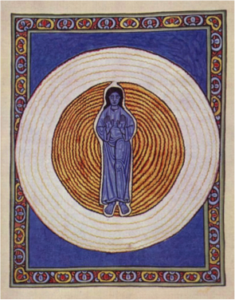 Out of all the great movements traversed in this small book, it is for the most intimate that I am here. The closest to this day. The farther the reach, the greater the intimacy—we can taste that, viscerally. The names of three core elements: spoken; the alchemical flowering of each: given. As All is Given. May these roots grow deep in our velvet dark within, and waken fully nourished in new arisings in the sacred mundane of this world.
Out of all the great movements traversed in this small book, it is for the most intimate that I am here. The closest to this day. The farther the reach, the greater the intimacy—we can taste that, viscerally. The names of three core elements: spoken; the alchemical flowering of each: given. As All is Given. May these roots grow deep in our velvet dark within, and waken fully nourished in new arisings in the sacred mundane of this world.
In the book circles we each alight upon what speaks to us in the moment. Deepening with each read, with the myriad reflections of others, and the resonance within—layers and deepens our experience. “The gate of heaven is everywhere.” An ‘everywhere’ that includes exactly where we are right now, and the places where two or more gather together in the name of the Holy.
A Poem
This early morning in meditation and exercise I found myself in prayer with a Holy Week blessing: On the Mount of Olives Jesus says: Keep watch and pray…I ask you, can you not stay awake for even one hour?
This brings me right back home. Can I not keep watch, now, for just one hour? Can I listen and respond to what is required, one hour at a time? This hour? This does not feel like a diversion from our topic, rather it is intimately connected to everything in this last chapter that confirms why I am here.
Can we keep watch, now, for just this one hour? Bear witness to the tenderness and the intimacy. Awaken to the weave of “the redemptive reality of suffering; the endurance of the personal; and the scandal of particularity” as it unfolds in our day? May we be blessed by the prayer of our own vulnerability, as we are humbled and ripened for the alchemical pot.
Rumi says, in his poem “The Waterwheel”:
Stay together, friends.
Don’t scatter and sleep.
Our friendship is made
of being awake.
The waterwheel accepts water
and turns and gives it away,
weeping.
That way it stays in the garden,
whereas another roundness rolls
through a dry riverbed looking
for what it thinks it wants.
Stay here, quivering with each moment
like a drop of mercury.
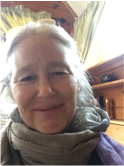 This resource was offered by Laura Ruth. Laura is dedicated to an embodied, practical Wisdom, awake and alive in daily life in her inner life and outer work, whether it is in her one-with-one private practice or with the Wisdom Waypoints Living Wisdom groups and book circles. Laura lives in Vermont on the land of the Abenaki people, with her dear husband, near their sons, two grandchildren and her mother.
This resource was offered by Laura Ruth. Laura is dedicated to an embodied, practical Wisdom, awake and alive in daily life in her inner life and outer work, whether it is in her one-with-one private practice or with the Wisdom Waypoints Living Wisdom groups and book circles. Laura lives in Vermont on the land of the Abenaki people, with her dear husband, near their sons, two grandchildren and her mother.
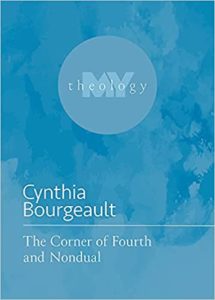 Images are all paintings by Hildegard de Bingen from her manuscript Scivias, and can be found in Matthew Fox’s Illuminations of Hildegard of Bingen. You can order the book from Amazon here.
Images are all paintings by Hildegard de Bingen from her manuscript Scivias, and can be found in Matthew Fox’s Illuminations of Hildegard of Bingen. You can order the book from Amazon here.

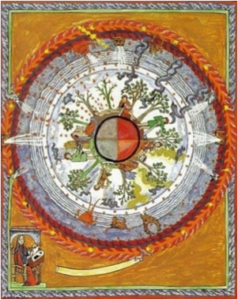
Thank you Laura for your insightful look into this essential CYNTHIA book. I will re-read it now with fresh eyes.